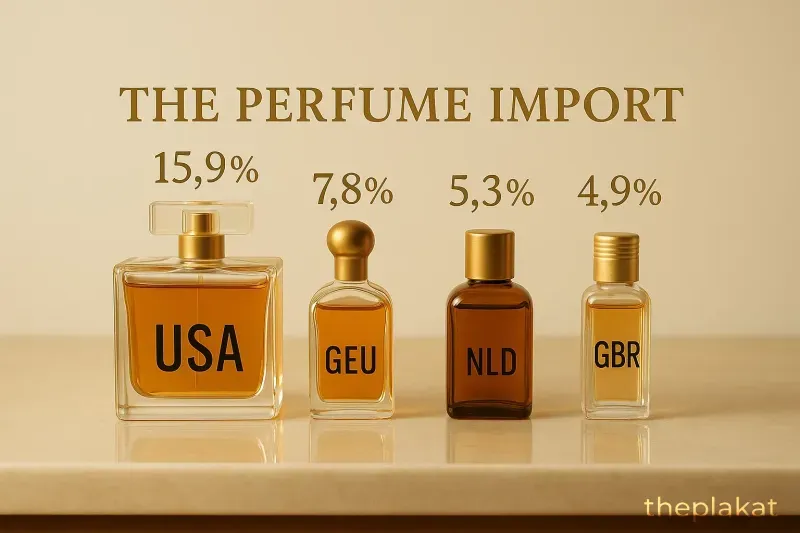Published
in Economy
The year 2023 saw the United States leading the global perfume import market with a 16% share. Other key players include Germany and the Netherlands.
The global perfume import scene in 2023 was led by the United States, which commanded a hefty 15.89% of the import market. This was followed by Germany at 7.81%. The Netherlands, with a 5.33% stake, and the United Kingdom at 4.94%, showed their market significance. The United Arab Emirates, known for its strategic trading position, further underscored its role with a 4.60% share.
Perfumes are not just luxury products; they represent a critical segment of international trade, carried across borders to meet diverse consumer demands. This trade is powered by the demand from affluent markets predominantly in North America and Europe. However, this analysis highlights that smaller economies cumulatively represent less than 1% of the global imports — a testament to the concentrated nature of the market.
The Economic Complexity Index (ECI) plays a crucial role in understanding the broader trade capability of these nations. Countries like Germany possess a high ECI, indicating a broad industrial base supporting perfume trade. Meanwhile, nations like the UAE act more as trading hubs, effectively using their geographical position and infrastructure to act as bridges for trade passing to and fro various global regions.
Countries not featuring in the top importers but maintaining a robust perfume trade often act as springboards for emerging markets and niche players. This highlights the industry’s flexibility and ability to adapt to cultural and economic variabilities across different regions.

The United States was the largest importer of perfumes in 2023 with a 15.89% share of the global market.
The United States is one of the largest consumer markets globally, where beauty and personal care products like perfumes have high demand, thus leading to high import volumes.
The perfume import market highlights concentrated trade with a few countries dominating imports due to their strategic economic positions and high consumer demand, reflecting broader economic and trade globalization trends.